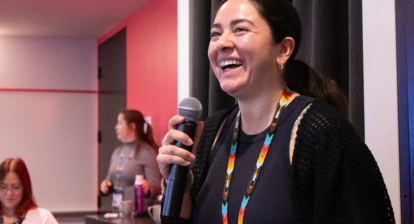As public health restrictions are progressively lifted, artists and cultural workers are longing for a return to some kind of normalcy. Except, audiences aren’t rushing back.
In jurisdictions where restrictions on capacity have been completely lifted, performing arts organizations report that ticket sales remain sluggish. According to the Arts Response Tracking Survey (ARTS), the percentage of Canadian culture goers that returned to indoor performances jumped from 6% in May to 18% in August. That is good, but still a long way from a full house. What is holding patrons back?
Vaccination by far the top safety precaution for indoor performances
As the successive waves of The New Experience Economy observed, consumers’ levels of comfort with events and activities is closely tied to vaccine rollout and fluctuations in the number of cases. This is particularly true among performing arts audiences. More than any other culture goers, performing arts patrons need to know that other people in the venue are vaccinated to feel comfortable attending indoor performances.
In the ARTS study, among the performing arts patrons who anticipate returning 1-5 months or more after cultural organizations are reopened (18% of survey respondents), 6 in 10 say they need “a majority of people getting vaccinated or proof of vaccination” in order to feel comfortable. Among patrons who self-identify as “unsure” (31% of survey respondents), 1 in 2 share the same feeling.
In the September edition of the Ontario Audience Outlook Monitor, 3 in 4 (78%) said that they will only attend in person events if proof of vaccination is required.
In the July wave of the New Experience Economy, 7 in 10 Albertans who are considering – but still waiting – to attend live performances said they would like to “see a majority of Albertans fully vaccinated” before they return. How many is that? Those who self-identify as “risk avoiders” would like to see 85% of the population vaccinated in order to feel comfortable.
Performing arts audiences obviously care a lot about vaccination, and 97% of respondents to the Ontario Audience Outlook Monitor reported being fully vaccinated as of September. Perhaps this is a story worth communicating to audiences that are still hesitant to return.
Many performing arts attendees still want social distancing and masks
One in two (51%) culture goers in Ontario will only attend performances if vaccination, masks and distancing are required, according to the Audience Outlook Monitor. Similarly, in the October wave of the New Experience Economy, 58% of live performance consumers in Alberta would like the full suite of health measures in place to attend an event (which is significantly higher than the average of 54%).
The ARTS study offers more nuances, with breakdowns by culture goer types and readiness to return. The study reveals that many performing arts goers still want mandatory masks in order to feel comfortable at indoor performance, but percentages vary significantly from one audience segment to another. 47% of performing arts patrons that anticipate returning to live events within 1-5 months state that they will require mandatory masking before they’ll feel comfortable at an event; however, only 24% of those who can’t commit to a return date feel the same way. Feelings about physical distancing between audience members are not quite as strong, but they are very consistent across all segments. 27% of patrons planning to return in the next 1-5 months want it, as do 19% of those who’ve not yet committed to a return date.
Open-ended responses to the Audience Outlook Monitor suggest that some audience members would feel more comfortable if more social distancing was in place. Meanwhile, certain audience members are expressing discontent with masks, but they represent a minority: 80% of performing arts audiences say health safety measures implemented at the event hardly interfered at all with their enjoyment of the artistic program.
Given these insights, performing arts organizations would be well advised to consider voluntarily maintaining such safety precautions as mandatory masking and physical distancing – for some or all performances…at least until currently hesitant audiences have returned.
Communicating the right message to the right audiences
Asked how they are selecting which activities to participate in, Albertans made it clear that safety is their primary concern. Their top three answers were:
- Knowing health protocols are strictly followed: 52%
- Things I feel have the lowest risk of getting COVID-19: 50%
- Only activities that have vaccine mandates: 48%
Performing arts organizations should continue to inform their patrons about their efforts to ensure safe and agreeable experiences. Tailor your marketing messages to reluctant patrons by stressing what you are doing to keep them safe and comfortable, over and above basic public health requirements.
Do you have all the help you need to bring hesitant audiences back?
As a performing arts organization attempting to convince your audiences to return, which of the following things would be helpful for you?
A dialogue with audience experts
If you wish to learn more about the findings of the ARTS study and the Audience Outlook Monitor, CAPACOA will be presenting a dialogue between Nik Nanos and Alan Brown on November 23:
Courting audiences after the pandemic
Tuesday, November 23, 2021
11:45 am – 12:45 pm (EST)
This event is presented as part of the CAPACOA Conference. Conference registration is required.
Sources
Nanos Research, Arts Response Tracking Survey: October 2021, survey commissioned by Business/Arts and the National Arts Centre and fielded in August 2021.
WolfBrown, Audience Outlook Monitor Ontario Phase 2: September 2021, commissioned by the Ontario Arts Council and Toronto Alliance for the Performing Arts
Stone-Olafson, The New Experience Economy, Phase 6: July 2021 and Building Experiences In The New Economy: Fall 2021.
Published November 10, 2021. Edited November 22, 2021 to include additional data points from detailed tables.







Frédéric Julien
The initial version of this post reported the sentiment of the Albertan population, as published in the provincial report of The New Experience Economy: “54% of Albertan consumers would like the full suite of health measures in place to attend an event.” This sentence was edited to report the sentiment of live performance attendees, as found in detailed tables shared by Stone Olafson: “58% of live performance consumers in Alberta would like the full suite of health measures in place to attend an event”.